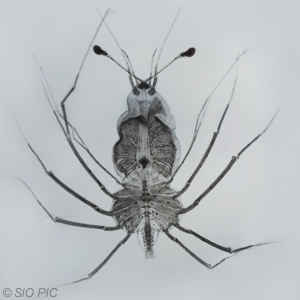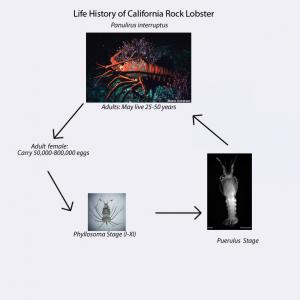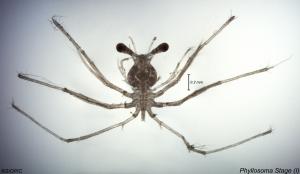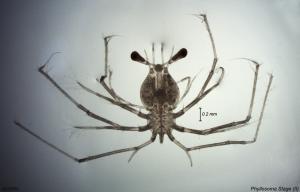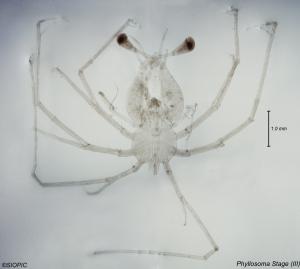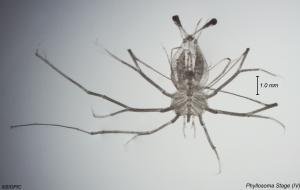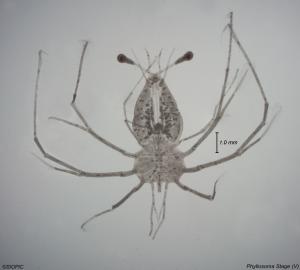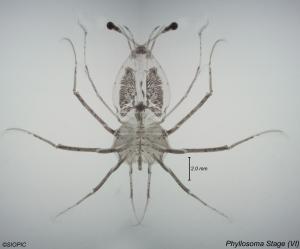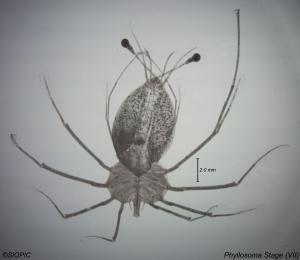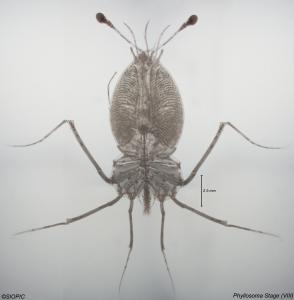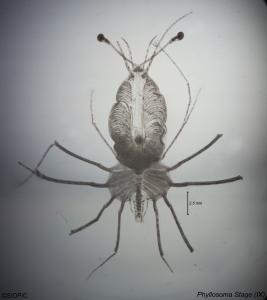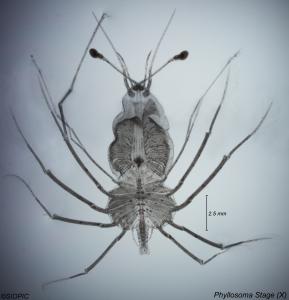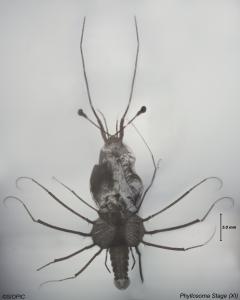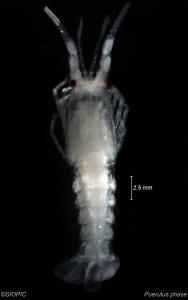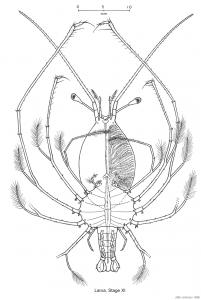Panulirus interruptus
There are 11 floating larval "phyllosoma" stages shown in the images here. The body is transparent and compressed dorsally. The 11th phyllosoma stage metamorphoses to the "puerulus" stage where it no longer has a leaf-like appearance and starts to take on more adult-like appearance. The puerulus' habitat becomes the benthos, like the adult.
Commonly call the California spiny lobster. The California spiny lobster is fished commercially and recreationally.
http://animaldiversity.ummz.umich.edu/accounts/Panulirus_interruptus/
http://www.montereybayaquarium.org/cr/cr_seafoodwatch/content/media/MBA_...
Johnson, M.W. (1956) The larval development of the California spiny lobster, Panulirus interruptus (Randall), with notes on Panulirus gracilis Streets. Proceedings of the California Academy of Sciences 29: 1-19.

